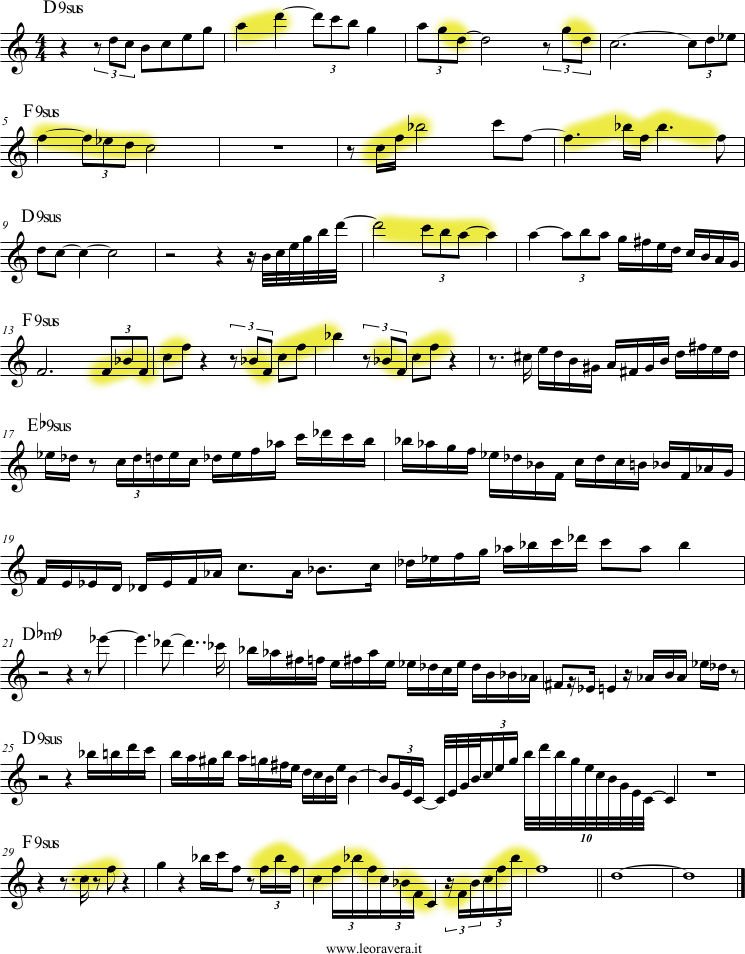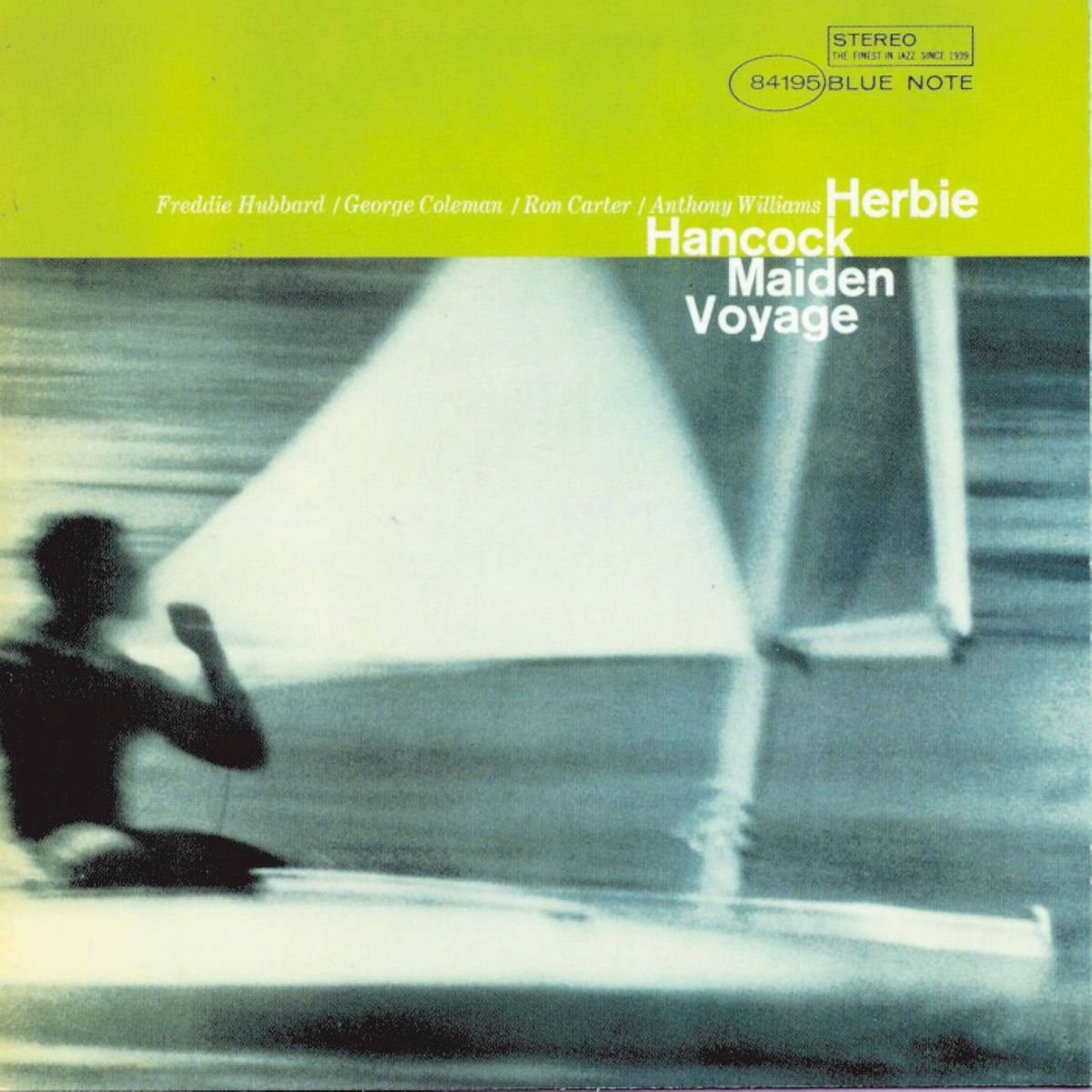[Monday Notes no. 85] Maiden Voyage is the title of a song and album by Herbie Hancock, a rather unusual record because it is inspired by a theme that is not really typical of jazz music: the sea.
The expression “maiden voyage” refers to the first journey of a boat that has just been put in the water. Herbie Hancock’s entire record is inspired by marine themes, the title of other tracks being for example Eye of the Hurricane and Dolphin Dance.
Maiden Voyage is thus the departure of Herbie Hancock’s metaphorical ship, a piece that expresses and suggests open, unexplored spaces. The theme opens and closes on enigmatic fourth intervals, with long notes and long rests.

The rhythm is also open and spacious, the rhythmic figuration based on two measures almost seems to suggest an 8/4 time.

The harmony is modal and based almost entirely on the 7sus chord, a smoothed-out dominant chord, lacking the harshness of the tritone, and which is consequently very open and evocative.
The harmony of Maiden Voyage is analysed in more depth within the jazz harmony course, part three, where each modal scale is explained in detail, with numerous examples.
To turn in music his idea of the open sea, Herbie Hancock therefore uses precise devices in the choice of melody, rhythm and harmony.
The band members cleverly follow the author’s intention, drummer Tony Williams plays in an original and unconventional way, often breaking up the accompaniment and sometimes almost coming to a halt, while the soloists often use elements of the theme in their improvisations.
An example of this is George Coleman’s solo on tenor sax.

The solo opens and closes on intervals of fourths (highlighted in the text). In the middle part, denser phrases ripple vigorously, like waves breaking on the rocks.
This record is one of jazz’s great masterpieces, a journey into deep and unexplored, mysterious but benevolent waters. A true source of inspiration for any musician and jazz enthusiast.
Until next Monday!


